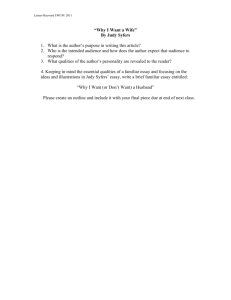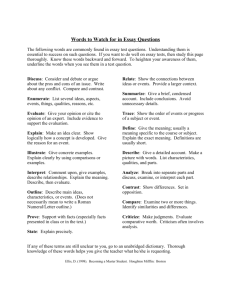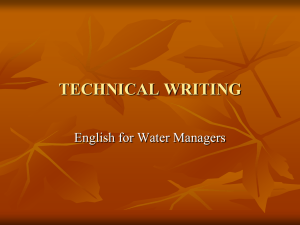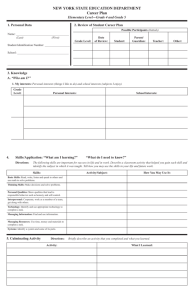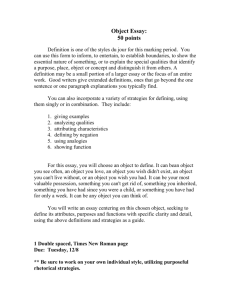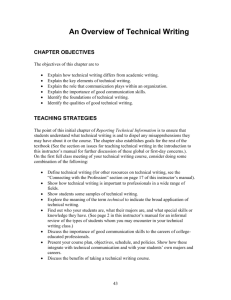Writing Mode: Definition
advertisement
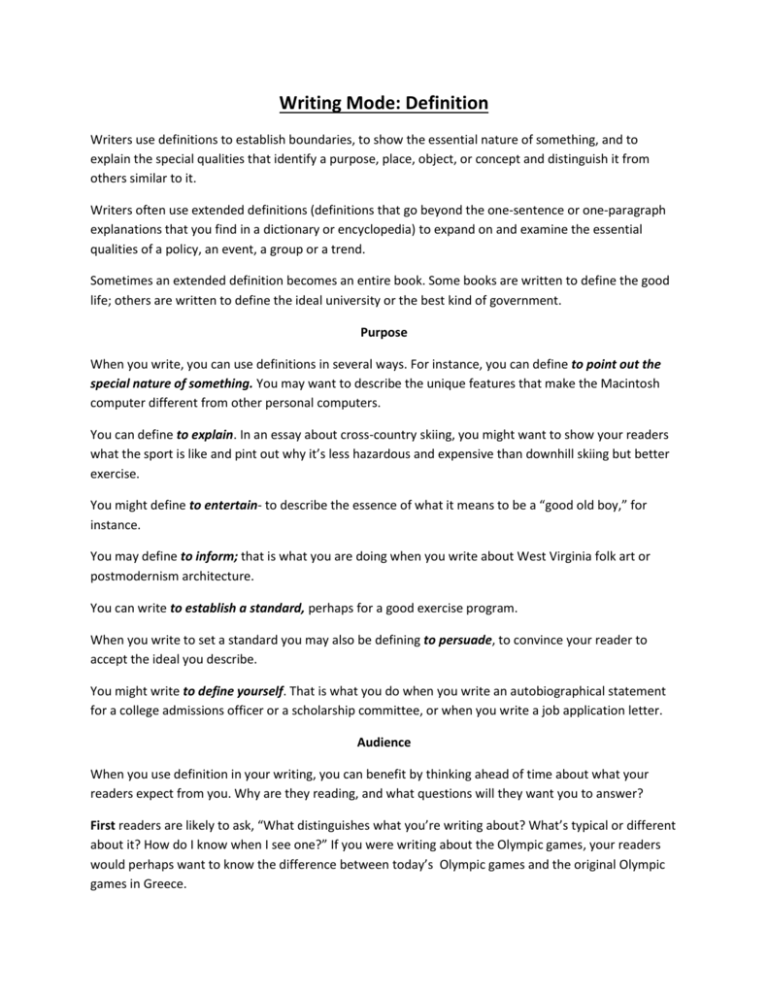
Writing Mode: Definition Writers use definitions to establish boundaries, to show the essential nature of something, and to explain the special qualities that identify a purpose, place, object, or concept and distinguish it from others similar to it. Writers often use extended definitions (definitions that go beyond the one-sentence or one-paragraph explanations that you find in a dictionary or encyclopedia) to expand on and examine the essential qualities of a policy, an event, a group or a trend. Sometimes an extended definition becomes an entire book. Some books are written to define the good life; others are written to define the ideal university or the best kind of government. Purpose When you write, you can use definitions in several ways. For instance, you can define to point out the special nature of something. You may want to describe the unique features that make the Macintosh computer different from other personal computers. You can define to explain. In an essay about cross-country skiing, you might want to show your readers what the sport is like and pint out why it’s less hazardous and expensive than downhill skiing but better exercise. You might define to entertain- to describe the essence of what it means to be a “good old boy,” for instance. You may define to inform; that is what you are doing when you write about West Virginia folk art or postmodernism architecture. You can write to establish a standard, perhaps for a good exercise program. When you write to set a standard you may also be defining to persuade, to convince your reader to accept the ideal you describe. You might write to define yourself. That is what you do when you write an autobiographical statement for a college admissions officer or a scholarship committee, or when you write a job application letter. Audience When you use definition in your writing, you can benefit by thinking ahead of time about what your readers expect from you. Why are they reading, and what questions will they want you to answer? First readers are likely to ask, “What distinguishes what you’re writing about? What’s typical or different about it? How do I know when I see one?” If you were writing about the Olympic games, your readers would perhaps want to know the difference between today’s Olympic games and the original Olympic games in Greece. Second, for more complex topics, you should expect that your readers will also ask, “What is the basic character or the essential nature of what you are writing about? What do you mean when you say ‘white-collar crime’?” Answering questions like these is more difficult, but if you are going to use terms like these in an essay, you have an obligation to define them, using as many strategies as you need to clarify your terms. To define white-collar crime, for instance, you could specify that it is non-violent, likely to occur within business, and involves illegal manipulation of funds or privileged information. Strategies You can choose from several strategies for defining, using them singly or in combination. Giving examples- something we do naturally when we point to a special automobile we like, or show a child a picture of a raccoon in a picture book. Writers use the same method when they describe a scene, create a visual image, or cite a specific instance of something. For example, if you were writing an essay to define pain, you might give examples of types or degrees of pain. Analyzing qualities/characteristics-emphasize what specific traits distinguish the person or thing you’re defining. When you use this strategy for people, you can focus on certain qualities or behaviors that reveal that individual’s personality and character. For example, when writing about what makes someone a good leader, you might examine the specific qualities of the person that allow him/her to lead well. Defining negatively-showing what something is not. For example, when writing to define healthy eating habits, you might point out that eating fast food is not healthy; when writing about an ideal relationship, you might express that “ideal” doesn’t mean “perfect.” Using analogies-using comparisons in order to define. For example, when describing climate change, you might compare rising ocean levels to an overflowing sink. Showing function- often the most important feature about an object, agency or institution is what it does. For example, if you are writing about tigers, you might emphasize that the primary function of at tiger is to kill for food; it is a predator. Points to remember: 1) Remember that you are obligated to define key terms in your writing 2) Understand your purpose in defining: to explain, to entertain, to persuade, to set boundaries, or to establish a standard 3) Understand how writers can construct an argument from a definition. For example, by defining the “good life”, they argue for that kind of life. 4) Know the several ways of defining: giving examples, analyzing qualities/characteristics, defining negatively, using analogies, and showing function. 5) Learn to use definition in combination with other strategies, as a basis on which to build an argument, or as supporting evidence.
